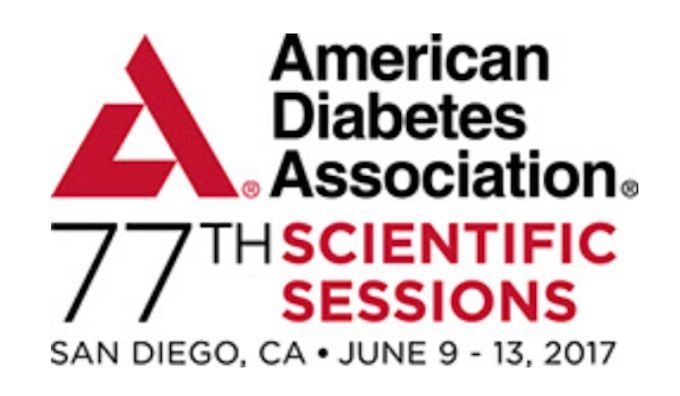Article
Results from inTandem1 and inTandem2 Unveiled at ADA 77th Scientific Sessions
Author(s):
Two pivotal studies on sotagliflozin were presented at the ADA’s 77th Scientific Sessions.

Two pivotal studies on sotagliflozin were presented at the American Diabetes Association (ADA)’s 77th Scientific Sessions in San Diego.
The studies, inTandem1 and inTandem2, yielded 24-week data that demonstrated some key efficacy and safety results for the use of sotagliflozin (Lexicon Pharmaceuticals, Inc.) in patients with type 1 diabetes (T1D).
As a first-in-class, sotagliflozin is an oral dual inhibitor of sodium-glucose co-transporter types 1 and 2 (SGLT-1 and SGLT-2), proteins that are responsible for glucose regulation. SGLT-1 absorbs glucose in the gastrointestinal tract, and SGLT-2 reabsorbs it in the kidneys.
inTandem1 and inTandem2 both showed that when used on top of optimized insulin, sotagliflozin 200 mg and 400 mg both reduced hemoglobin A1C compared with placebo (P < .001 in both studies).
The drug was generally well tolerated, with a low rate of severe hypoglycemia seen in both studies. Across both studies, severe hypoglycemia occurred less frequently on the sotagliflozin regimen than it did on placebo in 3 of 4 arms.
Also in both studies, the rate of diabetic ketoacidosis was low (0.4% to 3.1% over the 24 weeks); it was higher in patients who were on an insulin pump than it was in patients taking multiple-dose injections.
The inTandem1 study—presented with the title, Twenty-Four Week Efficacy and Safety of Sotagliflozin, a Dual SGLT1 and SGLT2 Inhibitor, as Adjunct Therapy to Insulin in Type 1 Diabetes, at the ADA meeting—met its primary endpoint of change in A1C levels from baseline after the 24-week treatment period. Changes in A1C were 0.08% for placebo, 0.43% for the 200-mg dose, and 0.49% for the 400-mg dose. For patients treated with the 200-mg dose and the 400-mg dose, the differences compared with placebo were 0.36% and 0.41%, respectively (P < .001 for both doses).
Secondary endpoints were also met in the 400-mg arm, with net benefit (defined as A1C <7.0% without an episode of severe hypoglycemia or diabetic ketoacidosis) weight, bolus insulin, fasting plasma glucose, as well as 2 patient-reported outcomes all being statistically significant. The secondary endpoints of net benefit and weight were also statistically significant in the 200-mg arm.
The medication was generally well tolerated, with treatment emergent adverse events (AEs) occurring at rates of 67.5% for placebo, 67.3% for the 200-mg dose, and 71.0% for the 400-mg dose. Serious AEs occurred at rates of 3.4% for placebo, 3.8% for the 200-mg dose, and 6.9% for the 400-mg dose. Study discontinuation rates because of AEs were 1.5% for placebo, 1.1% for the 200-mg dose, and 3.8% for the 400-mg dose. No deaths were reported in the study.
inTandem2 was presented at the ADA meeting with the title, Twenty-Four Week Efficacy and Safety of Sotagliflozin, a Dual SGLT1 and SGLT2 Inhibitor, as Adjunct Therapy to Insulin in Type 1 Diabetes. It yielded a reduction in A1C from baseline to 24 weeks of 0.03% for placebo (P = 0.54), 0.39% for the 200-mg dose (P < .001), and 0.37% for the 400-mg dose (P < .001). The mean difference for the 200-mg and 400-mg doses compared with placebo were 0.36% and 0.35%, respectively (P < .001 for both doses).
Also compared to placebo, both doses were statistically significant (P < .001) on the net benefit endpoint, A1C <7.0% without an episode of severe hypoglycemia or diabetic ketoacidosis.
Like inTandem1, the medication was generally well tolerated, with incidence rates of treatment emergent AEs being 51.4% for placebo, 55.9% for the 200-mg dose, and 54.4% for the 400-mg dose. The incidence rate for serious AEs was 3.5% for the placebo and 4.2% for both the 200-mg and 400-mg doses.
The discontinuation rates because of AEs were 1.6% for the placebo, 1.9% for the 200-mg dose, and 3.0% for the 400-mg dose. Two deaths were reported in the placebo arm; no deaths were reported in either the 200-mg or 400-mg dose arms.
"There remains a need for oral therapeutic agents in addition to insulin to help improve quality of life in patients with type 1 diabetes by reducing the diabetes management burden and sotagliflozin has that potential," John Buse, MD, PhD, lead investigator of inTandem1 and professor of medicine, chief of the Division of Endocrinology and Metabolism, director of the Diabetes Care Center, and executive associate dean for clinical research at the University of North Carolina School of Medicine, said in a news release announcing the results. "Sotagliflozin has demonstrated, in three Phase 3 studies, the ability for patients to achieve glycemic goals with a safety profile that supports its utility in the type 1 diabetes community."
"We are extremely pleased with the results achieved by sotagliflozin in its three Phase 3 studies," Lonnel Coats, Lexicon's president and chief executive officer, said in the same news release. "We look forward to seeing the pooled continuous glucose monitoring data from inTandem1 and inTandem2 as well as data from secondary endpoints in inTandem2 in the third quarter."




